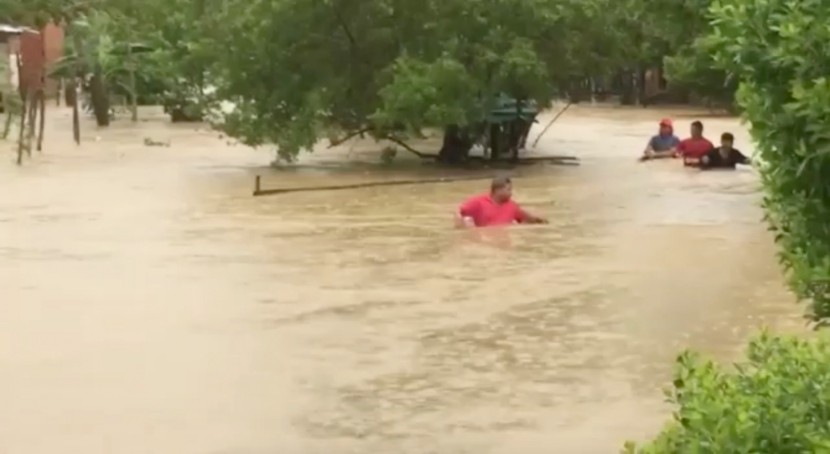
After sweeping the western Caribbean Monday morning, Hurricane Iota now developed into an extremely dangerous Category 5 storm as it approaches the same area of Central America which was battered by Hurricane Eta not less than two weeks ago.
National Hurricane Center forecasters shared in their 10 a.m. ET update that the maximum winds Iota had reached was at 160 mph, which puts it to a Category 5 hurricane, making it the most powerful hurricane this year, 2020, and the strongest ever recorded in the month of November.
Officials are now sending warnings that Iota will probably come ashore over areas where torrential rains of Eta have already saturated the soil, which makes it more prone to new landslides and floods.
Storm surge was also expected as it could possibly reach 12 to 18 feet above normal tides or 3.6 to 5.5 meters.
According to the forecast, Iota will be dropping 8 to 16 inches of rain in the northern areas of Nicaragua, Guatemala, Honduras, and the southern portion of Belize, with as much as 30 inches in isolated spots, Yahoo! News reported.
The Hurricane Center also mentioned that Panama and Costa Rica will also be experiencing heavy rain with a possibility of flooding.
Honduras and Nicaragua are now conducting evacuations from the low-lying areas near their shared border, as it is where Iota will most likely making its landfall.
On Sunday night, winds and rain were already being felt in the coastal area of Nicaragua.
Read also: Paragliding Accident: 91-Year-Old Australian Man Survives Ocean Crash
According to the weather producer David Parkinson of CBS, after hitting the Nicaraguan territory, the storm will weaken as it heads inland to El Salvador and Honduras.
But he also added due to the fact that the northern side of the storm is the moisture-laden part, it will dump up to 30 inches of rain in areas like San Pedro Sula which experienced the same amount from Hurricane Eta.
Weather condition Iota became a hurricane just early Sunday but it gained power rapidly.
The United States National Hurricane Center sent a warning that it would most likely reach the mainland of Central America late on Monday.
The 30th recorded named storm, Iota was one of the many storms from the extraordinarily busy Atlantic Hurricane season as such unusual activity has been linked to climate change, as scientists shared that it is causing stronger, wetter, and more destructive storms.
The whole country of Honduras was placed on high alert, as the compulsory evacuations were ordered before the weekend.
According to The Washington Post, on Sunday evening, a total of 63,500 individuals were already reported to be in 379 shelters just in the northern coastal region, and officials from Nicaragua shared that by late Sunday afternoon, there were already 1,500 people, and nearly half of them were children.
The evacuation focused on the low-lying areas in the northeastern part of the country, which includes all of the inhabitants of Cayo Misquitos and according to the officials, 83,000 individuals in that region were in danger.
The official end of the hurricane season is on the 30th of November.
Related article: 7 Dead, 11 Injured in Hong Kong's Deadliest Fire Since 2011








